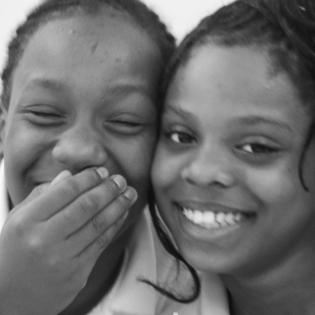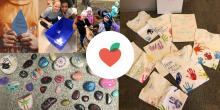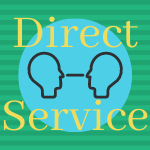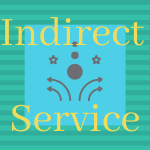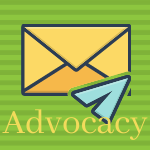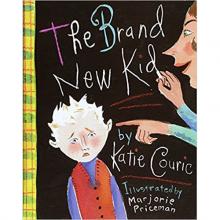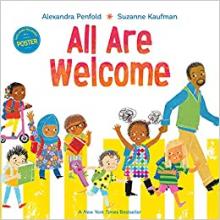Kindness
This toolkit guides youth, educators, group leaders, families, and community groups as they investigate the issue of kindness and prepare to take action.
Contents:
- Definitions
- Key questions
- Background
- Lessons and activities
- Resources in your community
- Project ideas and guide to service-learning
- Quotes
Kindness
Our civil society is shaped by millions of small actions that can add up to movements. Each person is like a drop of water in a wave; together we make the powerful motion.
“No act of kindness, no matter how small, is ever wasted.” – Aesop
Share this example of a ripple of kindness.
Reflection: Tell about a time that being kind was hard and you did it anyway. What did you do, and what was the effect?
Definitions and Key Questions
See the handout below for Vocabulary and Key Questions related to kindness.
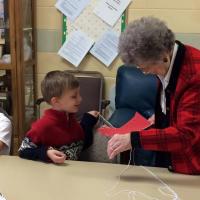
Definitions:
As young people build knowledge and passion for taking action, they can look up vocabulary and read more about the issues and needs. Here are some of the relevant vocabulary words.
- kindness
- generosity
- empathy
- bullying
- character
Key Questions for Learning and Service:
These key questions may guide investigation or generate inquiry about other areas of interest. The best service-learning experiences follow the passions of youth and local concerns. Here are some sample questions:
- What can you do or say when you see someone being unkind to another person?
- Think about a person you know who is really kind. What are some examples of their actions and attitudes?
- In what way can one person who is part of a community do something that makes a difference?
- Where do you see opportunities to show kindness toward someone in your community? What can you do to help people who might experience difficulty?
- What can you do to listen and show gratitude for others?
- Talk about safety concerns and limits. What are some things you can do without an adult's permission?
Background Information
Share these background resources to inspire and inform youth about the power of kindness.
- Harvard's Making Caring Common project provides resources that teach young people to put kindness above personal success.
- The nonprofit Do Something provides background information on a variety of issues that interest youth, as well as ideas for taking action to promote resolution for issues and fostering kindness in the community.
- Random Acts of Kindness focuses on promoting kindness in schools, communities and homes.
- StopBullying.gov is a government project to provide training and tools to promote positive behavior. There is also information particularly related to cyberbullying.
- This Video on Anti-Bullying shows how a group of elementary school students befriended a classmate with a disability.
- Kindness may be the link between Philanthropy Education, Project Based Learning, and Service-Learning - Great things Happen in the Overlap
Lesson Plans
Learning to Give has hundreds of lesson plans to inspire and inform youth action. Search our related lesson plans for topics that fit your interests and age of your kids. Narrow your search with keywords like bullying or the group you want to serve. Here are some sample lesson plans:
- Students learn about bullying behavior and how to respond with kindness Anti-Bullying lessons.
- Character Education lessons designed for middle school provide activities for different character traits
- In this Kindness Certificate lesson, young children learn that presents don't need to be purchased.
- Justice and Kindness Play a Part is a role-playing activity.
Community Resources
For meaningful service-learning projects with long-lasting impact, connect youth to people and nonprofit organizations in the local community related to their service area of interest. This is an opportunity for a field trip (may be virtual) or for an expert to teach about issues and what is already being done. Youth may write, call, or interview experts about needs and partnerships.
- Senior care facilities or centers - This guide can help youth contact a local nonprofit.
- Early childhood center - This guide can help youth contact a local nonprofit.
- Faith organizations
- Community park foundations
- Refugee center
- Food pantries
- Neighborhood organizations
- Rotary Club
- Lion's Club
- Animal assisted therapy center - This guide can help youth learn about and make a contact with a local nonprofit.
- This guide can help youth learn about and contact a center that assists people who are visually impaired.
Project Ideas
There are four types of service. The ideas below are grouped by these types. The best service-learning experiences follow the passions of youth and local concerns. These are provided to start conversations and ideas.

This overview Guide for Planning Service-Learning describes each step of the process and actions to take.
This blank chart for Planning Service-Learning helps youth prepare for who does what for maximum service and learning impact
- Spark a Giving Conversation: One conversation may spark another and spread generosity like ripples in the larger community.
- Make repairs or do work around the home of an elderly person in the neighborhood.
- Visit a local retirement community or preschool for the purpose of reading to, interviewing, or playing games and developing intergenerational relationships.
- Volunteer to teach computer or Internet skills at the public library or senior center.
- Volunteer to teach a skill to people in your community, such as coach a team or teach knitting.
- Write a personal note to someone with a compliment or words of encouragement. These notes could be given to friends, family members, people in the hospital, seniors in a nursing home, deployed troops, or anyone else that could use an uplifting card. Attach a candy bar to the notes and deliver them.
- Make friendship bracelets or another craft to give away with a message of "pay it forward."
- Design bookmarks with kindness slogans and ideas for random acts of kindness. Ask the local library if you may put them on the checkout desk for patrons to pick up.
- Make "coping boxes" for kids who have experienced trauma. Put in items for fidgeting or comfort, which may be purchased, homemade, or gently used. Contact a local agency that serves kids and ask about their needs.
- Write kind notes to people who provide a regular service. Be specific and respectful in the letters and let the people know that they are appreciated for what they do. This may include a crossing guard, a school volunteer, a letter carrier, the receptionist at the orthodontist office, a choir or youth leader, or the principal at your school.
- Write letters to people who have experienced a traumatic event. Service Sparks: Compassionate Expressions
- Start a movement to spread kindness and peace. Service Sparks: Spread Peace - Say Something.
- Learn best practices for combating bullying and create a campaign designed to impact youth and community members.
- Design PSA videos or brochures and write to local and state legislators to try and get them to strengthen laws against cyber-bullying and bullying in general.
- Make a kindness challenge at school. Give it a theme and an end goal, such as each class fills 20 feet of hallway with hearts. Participants write a sentence on a pre-designed heart-shaped paper to tell others about their service.
- Survey people in your school or group to find out about their kindness or bullying experience. Use the information collected to make a plan.
Literature Guides
The Brand New Kid literature guide provides before, during, and after-reading discussion questions. Choose from activities and discussion questions to step in the shoes of someone new and discuss what we can do to make them welcom.
All Are Welcome Here literature guide includes before, during, and after-reading discussion questions. School is a community where diversity is celebrated and people of all backgrounds, abilities, and appearances are welcome. This book is a rhythmic colorful tour of the first day of school and all of the activities taking place.
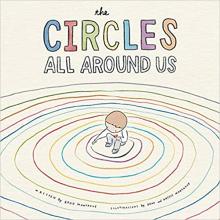
Circles All Around Us literature guide provides before, during, and after-reading discussion questions. Choose from activities and discussion questions to explore the power of community and the difference we can make when we have the courage to open ourselves up to others.
Quotes
Ways to use quotes with youth: Use it to spark conversation. Write about its meaning or do research on the person or topic. Represent the quote visually and display in social media. Tell whether you agree or disagree with the quote. Rewrite it to speak for you.
“We Don’t Have to Agree on Anything to Be Kind to One Another.” ― unknown
“In a gentle way, you can shake the world.” ― Mahatma Gandhi
“A warm smile is the universal language of kindness.” ― William Arthur Ward
“Try to be a rainbow in someone's cloud.” ― Maya Angelou
"Be kind whenever possible. It is always possible." ― Dalai Lama
"A single act of kindness throws out roots in all directions, and the roots spring up and make new trees. The greatest work that kindness does to others is that it makes them kind themselves." ― Amelia Earhart
"Wherever there is a human being, there is an opportunity for a kindness." ― Lucius Annaeus Seneca
